- Administrator
- Albums and Singles

Wilderness of Mirrors is the new album from Lawrence English. It is two years in the making and the first album created since the release of his 2011 ode to J.A Baker’s novel, The Peregrine. It is English’s most tectonic auditory offering to date, an unrelenting passage of colliding waves of harmony and dynamic live instrumentation.
The phrase, wilderness of mirrors, draws its root from T.S Eliot’s elegant poem "Gerontion." During the cold war, the phrase became associated with campaigns of miscommunication carried out by opposing state intelligence agencies. Within the context of the record, the phrase acted as a metaphor for a process of iteration that sat at the compositional core of the LP. Buried in each final piece, like an unheard whisper, is a singularity that was slowly reflected back upon itself in a flood of compositional feedback. Erasure through auditory burial.
Wilderness Of Mirrors also reflects English’s interests in extreme dynamics and densities, something evidenced in his live performances of the past half decade. The album’s overriding aesthetic of harmonic distortion reveals his ongoing explorations into the potentials of dense sonics.
“During the course of this record,” English explains, “I was fortunate enough to experience live performances by artists I deeply respect for their use of volume as an affecting quality, specifically Earth, Swans and My Bloody Valentine. I had the chance to experience each of these groups at various stages in the making this record and each of them reinforced my interest in emulating that inner ear and bodily sensation that extreme densities of vibration in air brings about.”
The album is moreover a reflection on the current exploitation of the ideals of the wilderness of mirrors, retuned and refocused from the politics of the state, to the politics of the modern multiplex. The amorphous and entangled nature of the modern world is one where thoughtless information prevails in an environment starved of applied wisdom. Wilderness Of Mirrors is a stab at those living spectres (human and otherwise) that haunt our seemingly frail commitments to being humane.
“We face constant and unsettled change,” English notes, “It's not merely an issue of the changes taking place around us, but the speed at which these changes are occurring. We bare witness to the retraction of a great many social conditions and contracts that have previously assisted us in being more humane than the generations that precede us. We are seeing this ideal of betterment eroded here in Australia and abroad too. This record is me yelling into what seems to be an ever-growing black abyss. I wonder if my voice will reflect off something?”
Wilderness Of Mirrors is reflection upon reflection, a pure white out of absolute aurality.
Out July 21, 2014. More information here.
Read More
- Administrator
- Albums and Singles

Melt Into Nothing is ENSEMBLE ECONOMIQUE's most lucid seance to date. The prolific Humboldt County musician has stripped layers off of his trademark haze but retained the beautiful desolation that’s earned him a rabid fanbase. The solo project of former Starving Weirdos member Brian Pyle, Ensemble Economique has crossed a land bridge from apocryphal world music and dusty soundtracks to gauzy 4AD-style atmospherics. Trellises of guitar embolden Pyle’s whispered, threadbare lyrics. On "Hey Baby," the itinerant tone feels like an update on Neil Young's stark and beautiful soundtrack for Jarmusch's "Dead Man." "Melt Into Nothing," like that beautiful film music, evokes the great American expanse.
Field recordings slip in and out of the mix. On "Fade for Miles," Pyle's adroit effects and backwards tape manipulation make the long trail on his vocals fade into waves on a rocky beach. Pyle combines minor-key organ and spacious string synths on "Never Gonna Die," recalling the grey grace of the releases on Factory's gothic cousin, Benelux. Thunder accentuates the dubbed-out machine drum programming as Pyle's dulcet tenor floats in storm clouds. The full-length also features contributions from Toronto artist DenMother and Parisian artist Sophia Hamadi, also of dark-wave Opale. This music is not excessively dark or severe. Rather, the record explores the internal dialogue of solitary walks. "Melt Into Nothing" is for making sense of humanity in nature’s unforgiving face. Ensemble Economique has made his most accessible record yet, but the complex emotion behind these tracks remains resonant and ultimately mysterious.
Out June 27th, 2014. More info can eventually be found here.
Read More
- Administrator
- Albums and Singles

Side A - "The Temple Bell Stops"
Side B - "But The Sound Keeps Coming" and "Out Of The Flowers."
Recorded at SOMA studios on April 21st, 2013 by The Norman Conquest. One take performances recorded without overdubs with the exception of an ARP 2600 Analog Synthesizer track by The Norman Conquest on "But The Sound Keeps Coming."
"Out Of The Flowers" was an improvisation with The Norman Conquest on the ARP.
Source material for "The Temple Bell Stops" and "But The Sound Keeps Coming" recorded by me at home in Chicago and in the field. Chanting on "The Temple Bell Stops" by an unknown monk at Jogyesa Buddhist Temple in Seoul, South Korea.
Additional contributions on "But The Sound Keeps Coming" by anonymous Cardinals, Nuthatches, Tufted Titmice, Woodpeckers and Blue-Jays in Hobart, Indiana; also Tree Frogs and Crickets at Hussy Lake, Michigan and Grasshoppers and Gold Finches at Clark and Pine Dune and Swale preserve in Gary, Indiana.
“There is all the time in the world for studying music, but for living there is scarcely any time at all. For living takes place each instant and that instant is always changing. The wisest thing to do is to open one’s ears immediately and hear a sound suddenly before one’s thinking has a chance to turn it into something logical, abstract, or symbolical. Sounds are sounds and men are men, but now our feet are a little off the ground.” -John Cage, from Juilliard Lectureenople
More information will eventually appear here.
Read More
- Administrator
- Albums and Singles

Mind-shattering double LP of dysphoric space-rock minimalism from two luminaries of the Swedish punk underground.
Second Launch follows Bremen’s self-titled debut of 2013 and comprises 11 controlled improvisations, reinforced with overdubs, that take clear inspiration from the dark side of kraut and progressive rock, early electronic and drone music, whilst also owing something to the fathomlessly bleak interior landscapes conjured by Nico/Cale on The Marble Index and Desertshore.
The complex dialogue between Lanchy Orre’s guitar and Jonas Tiljander’s organ, by turns pensive and combative, bound up with their mastery of reverb and feedback, is the focal point of the record; supplemented with drums and sparingly deployed analogue synthesizer tones to evoke nothing less than the vast emptiness of outer space and the obliteration of all meaning and identity in the face of it.
From the full-throttle motorik and bonehead repetitions of "Sweepers" and "Entering Phase Two" (echoes of Tiljander and Orre's alma mater, Brainbombs) to the deep astral psychedelia of "Static Interferences," via the mournful Northern European ambience of "Walking The Skies," the rolling thunder of "They Were Drifting" and the poignant, stargazing blues of "Hollow Wave," Second Launch charts impossible gradients in its search for answers to the oldest questions of all.
More information here.
Read More
- Administrator
- Albums and Singles
A three-pronged advance through the heart of physical sunshine playing on the floor of the jungle. Epic, insistent collabasitions played out over four sides making a whole.
(Slightly) more information here.
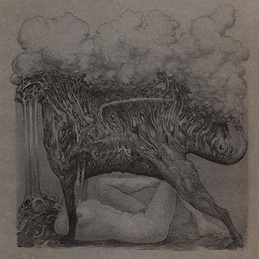
Read More
- Administrator
- Albums and Singles
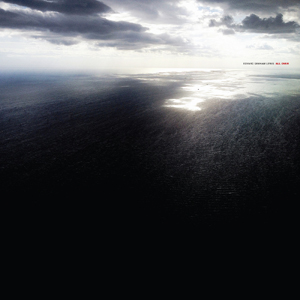 Since the reformation of Wire in the early 2000s, solo and side projects from Colin Newman and Graham Lewis have been scant to say the least, with only the occasional odd release or compilation song to be heard. Therefore, the announcement of not just one, but two new Lewis albums immediately grabbed my attention, and immediately made me wonder how they might differ being issued as true solo albums (as opposed to as He Said or Hox). Featuring assistance from collaborators including Thomas Öberg (27#11), Andreas Karperyd (He Said Omala, Hox), and Paul Thomsen Kirk (Akatombo), the results were certainly worth the wait, and make for the perfect culmination of his work to date.
Since the reformation of Wire in the early 2000s, solo and side projects from Colin Newman and Graham Lewis have been scant to say the least, with only the occasional odd release or compilation song to be heard. Therefore, the announcement of not just one, but two new Lewis albums immediately grabbed my attention, and immediately made me wonder how they might differ being issued as true solo albums (as opposed to as He Said or Hox). Featuring assistance from collaborators including Thomas Öberg (27#11), Andreas Karperyd (He Said Omala, Hox), and Paul Thomsen Kirk (Akatombo), the results were certainly worth the wait, and make for the perfect culmination of his work to date.
Even at a quick spinning, it makes sense for these to be released as two distinct albums as they differ so significantly from each other.All Over is the more accessible of the two, and could easily have been branded a He Said release and sit nicely alongside Hail and Take Care.Like that project's peak era, it is his use of conventional, largely electronic instrumentation in unconventional arrangements that lead to a sense of dissonance, but never straying far from memorable pop hooks.Just like "ABC Dicks Love" and "Could You?" were fascinating bits of off-kilter synth pop with Lewis' eternally smooth vocals leading the way, "Straight into The Corner" has a modernized electronic feel in its stabbing percussion and slightly disjointed melody, given extra momentum by his vocal performance.
The rapid, danceable beat that underscores "The Start of Next Week" keeps things up-tempo amidst more chaotic passages and heavy vocal processing.Catchy but frenzied, he overall sound is reminiscent of the brilliant 27#11 single from a few years back. Some more contemporary IDM sounds and production appears on "Bluebird" but in a slower, moodier progression overall.
"We've Lost Your Mind," released as a teaser a few months ago, also conjures feelings like another throwback to times past.Its loose, poppy structure and tastefully prominent synth sequence sounds like something that would appear if Wire's A Bell is a Cup was recorded this year.Closing song "Passport to International Travel" ends the album on a high, frenetic note.With a punky exuberance and a rapid tempo, it is an undeniably energetic and fun song, with a youthful energy that solidifies the fact that Edvard Graham Lewis is the coolest 61 year old on Earth.
samples:
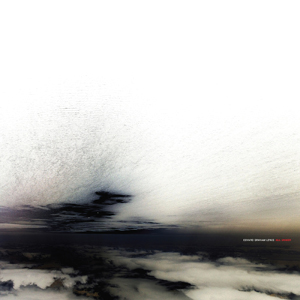 The companion album, All Under, takes a far more abstract direction in comparison, for the first half dropping the beats and vocals for dissonant electronic textures and odd effects in an overall sound that fits well with the more difficult Dome moments with Bruce Gilbert."All Under (Film Score)" drifts from an industrial scrape to a modular synth twinkle into pure DSP crunch in just under six minutes; all the more impressive considering it was recorded live with just a sampler and effects.The "All Under (Installation Loop)" version is significantly longer and more skeletal, at first hollow and drifting, then mixed with sharper feedback and pinging electronics that upset things nicely.
The companion album, All Under, takes a far more abstract direction in comparison, for the first half dropping the beats and vocals for dissonant electronic textures and odd effects in an overall sound that fits well with the more difficult Dome moments with Bruce Gilbert."All Under (Film Score)" drifts from an industrial scrape to a modular synth twinkle into pure DSP crunch in just under six minutes; all the more impressive considering it was recorded live with just a sampler and effects.The "All Under (Installation Loop)" version is significantly longer and more skeletal, at first hollow and drifting, then mixed with sharper feedback and pinging electronics that upset things nicely.
Graham takes the remaining half of the album in even odder directions."The Eel Wheeled" is a spoken word piece:a surrealist tale of espionage backed by Lewis' heavy mangling of a standard sound effects library, with a second half that progressively becomes unhinged in the most brilliant way.The lengthy "No Show Godot" has some hints of the sound that defined All Over, but in a sprawling, 18 plus minute expanse.Initially opening as drifting ambient piece with a slight acerbic edge to it, it becomes more abrasive via stuttering passages of noise that ends up locking into an oddly skewed rhythmic structure.This moves into an overt, electronic drum circle type pounding and mostly untreated vocals.
Given the length of time since the last full-fledged solo release from Graham Lewis, I had high expectations for All Under/All Over.Considering the fact they were recorded over the past decade, it makes sense that these two cover the gamut of his previous styles as a series of ideas and snippets that benefited from the time Lewis took to polish and expand.With one half encompassing dissonant and experimental electronic music that has a uniquely powerful penchant for pop hooks and memorable vocals, and the other hinting back to his earliest experiments with music and noise, the two albums are inseparable sides of the same coin. They both also clearly show that nearly 40 years into his career, Graham Lewis is an artist unlike any other in the quality and uniqueness of his work.
samples:
 
Read More
- Administrator
- Albums and Singles
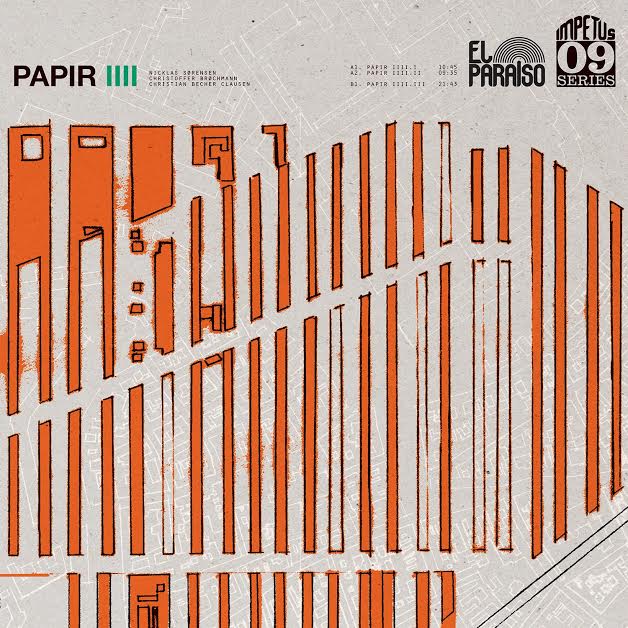 Papir's fourth album shows off the trio's dynamism and subtlety across a broad range of emotional and technically impressive instrumental passages, recalling influences as diverse and possibly accidental as Durutti Column and Hawkwind.
Papir's fourth album shows off the trio's dynamism and subtlety across a broad range of emotional and technically impressive instrumental passages, recalling influences as diverse and possibly accidental as Durutti Column and Hawkwind.
I have slowly developed considerable liking for this four song release. Not that there isn’t plenty of immediate pleasure in listening to IIII but some aspects of these lengthy instrumental pieces are revealed more gradually. The drumming, for example, takes the lead at times, even seeming to hold the melody on "IIII". While IIII is a proper album, in that it is a very coherent and connected composition, it does not have a recurrent theme, although the start of "II" and the whole of "IIII" share a mood of cool reflection after some frenetic interplay between instruments.
Papir has one foot in post-rock and another in an earlier, more muscular or fleshed-out progressive music with echoes of riff-driven psychedelia and surf-guitar. These influences do not tip over into mere pastiche and are kept very subservient to the trio’s own dynamic and semi-improvisational style. Thankfully, even on the extended passages, that style doesn’t really develop into an awkward situation where just the musicians are having all the fun.
Depending on my mood I either start the album with the brisk Tortoise-esque "I" or with the shortest piece, "IIII," which almost resembles a post-rock take on Peter Green’s "Albatross." This is only an option with the CD version as "IIII" is left off the vinyl due to lack of space.
Papir use lashings of twang and wah wah, achieve plenty of tweaks in tone and tension, and effectively use changes in pace and volume to add freshness and variety. My favorite of these changes is during "III," around 11 minutes in, where they drop into a complete silence then add a quiet guitar figure in a slower pace for a while. The effect is rather like the protagonist in a Murakami novel jumping a wall into a peaceful alley and sitting; an escape into another world away from the crowded city and his pressing concerns. Papir also execute a good hypnotic trick: making me listen so intently to the nuances and repetition in their music that I miss the exact point when—to put it in visual terms—the vase becomes two people kissing. This is an immersing release from a young Scandinavian trio.
Read More
- Administrator
- Albums and Singles
 “The idea for The Death Of Rave was conceived in early 2006 after a visit to the Berghain Club in Berlin. At the time Berghain was about to explode on the international club scene as a temple. The feeling was in the air that something special was happening. I went and saw a pale shadow of the past. Grim and boring beats, endlessly pounding to an audience who felt they were part of an experience but who lacked cohesion and energy. For me personally something had died. Be it a spirit, be it an ideal, be it an adventure in sound. Rave and techno felt dead to me.
“The idea for The Death Of Rave was conceived in early 2006 after a visit to the Berghain Club in Berlin. At the time Berghain was about to explode on the international club scene as a temple. The feeling was in the air that something special was happening. I went and saw a pale shadow of the past. Grim and boring beats, endlessly pounding to an audience who felt they were part of an experience but who lacked cohesion and energy. For me personally something had died. Be it a spirit, be it an ideal, be it an adventure in sound. Rave and techno felt dead to me.
The original The Death Of Rave project was vast, over two-hundred flashbacks, using all of the dance floor hits from the time and stripping theme of energy and spirit, turning them into shadows and ghosts. The material pre-dates the recent obsession younger musicians have for re-creating remembered rave textures and memories. This was not nostalgia, It was an inverted paean to a time when the music was about bringing people together for a shared experience. A time when only the music, advancement of sound and getting on one mattered.
Of course The Death Of Rave was vast, too vast to digest. It was available for free download for a number of years via the V/Vm Test label. In the end The Death Of Rave died itself when the V/Vm Test website was deleted in full in 2008. In the intervening years I have at various times re-visited the work. And so eight tracks were lifted from the project and have now been remastered by Matt Colton as a "document from a dead past." A monument to a lost work, an idea finally set in stone via a physical format. Proof of its existence.
Ivan Seal himself a veteran of the original "rave times" provides the glorious cover artwork in keeping with all History Favours The Winners" releases. The track-listing is in reference to the strongest rave-memories I have from those nights. The people, the DJ’s, the cars, the violence and the long lost clubs. Flashbacks only, now consigned to my own dusty experiences.
"'They danced like they never had before. They danced in the darkest hour before daybreak.’ It’s dead now, over. Long may it live...”
More information can be found here.
Read More
- Administrator
- Albums and Singles
 The story went like this…….
The story went like this…….
"There are 10 people who run the World. They are exclusively male, and presidents, magnates, and high priests all do their bidding. The 10 live in villas in the remotest part of the Himalayas—a place that absolutely NO-ONE would ever stumble upon. Although the 10 live in such close proximity to each other, they choose to have meetings in the back room of a small office in London. That's where the decisions are made. That's where the wars begin, that's where the dice are tossed across the table to establish who wins, who loses, who lives, who dies."
The classic conspiracy theory to end them all and I listened, open-mouthed, hair falling into my eyes . It was maybe 1976 when I heard this first.
You are right to snigger at my naivety. I listened and twisted this story around inside my head, and it did indeed seem completely unbelievable.
Now of course it's 2014, and I'm older and wiser and I have to laugh at myself too. Now I know wasn't a theory. Now I know it's true. EK
Uploaded here is merely a trailer for Volume 1, due out as a glorious slab of vinyl from the Rustblade label on 27 June 2014.
Read More
- Administrator
- Albums and Singles
 Extremely enigmatic and sporadically active over the past 30 years, Fossil Aerosol Mining Project maintains their secrecy on this new album of decaying material and found recordings. Heavily based on the use of ancient magnetic tape and careful mixing and processing, the result is a strange, sometimes dark but always captivating bit of audio art that emphasizes mystery above all else.
Extremely enigmatic and sporadically active over the past 30 years, Fossil Aerosol Mining Project maintains their secrecy on this new album of decaying material and found recordings. Heavily based on the use of ancient magnetic tape and careful mixing and processing, the result is a strange, sometimes dark but always captivating bit of audio art that emphasizes mystery above all else.
Songs such as "From the Lowlands" most clearly demonstrate this penchant for employing fragmenting, decaying sounds.Backwards tapes and what sounds like moody ambient electronics make up the bulk of the piece, with delays and pitch bending emphasizing this decaying feeling."Lowlands Hybrid" has the same feel to it, but more stripped down to a spacious ambient drone.
Field recordings act as a major element in a few of these pieces, but mostly as an instrument rather than the sole focus."Transparency of Limestone" sounds like a walk through nature, with chirpy birds and buzzing insect recordings receiving just the right amount of processing to make them unique.The familiar sounds are soon deconstructed into an expanse of crunchy textural noises and electronic space.The lengthy "Ice Falls/Taking on Water" uses some natural sounds with a synth like expanse, to put it somewhere between field recordings and conventional music.The ambiguity is only enhanced with the clanking machinery that ends up acting as a rhythmic counterpoint.
"Systems Clock" also demonstrates a little bit of a rhythm, interspersed with what sounds like vinyl record surface noise and recordings of idling engines.Extremely unconventional, but these found sounds are shaped expertly by these mysterious composers into something memorable.Bits of dialog and what sounds like radio communications on "Backbone 1982" give it a different, more dissonant feel overall.Dense, heavy passages of what sounds like a mass of electronics lead it towards a darker, more oppressive sound compared to the remainder of the record.
The found recordings and rotting tapes that make up the core of 17 Years in Ektachrome make for a mysterious, sometimes disorienting recording that leaves just enough that can be recognized audible, while building up a world of ambiguity all around.Coupled with the enigmatic nature of the project, the result is a fascinating record that features layers of mystery that are not easily unraveled.
samples:
 
Read More
- Administrator
- Albums and Singles
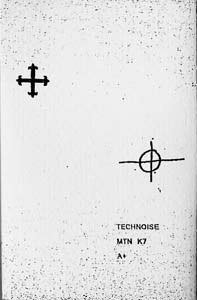 One of the most recent examples of an established noise artist "selling out" (and I mean that sarcastically) and making actual music was a surprising one. Avellan Cross' Elden M is best known for his work as the enigmatic Allegory Chapel Ltd., but has been dipping his toe into the new lo-fi EBM scene. The thing is, he brings enough of his dissonant past with him to make an album that really cannot be easily labeled, but covers enough of both industrial and noise to make it a strong entry in both genres.
One of the most recent examples of an established noise artist "selling out" (and I mean that sarcastically) and making actual music was a surprising one. Avellan Cross' Elden M is best known for his work as the enigmatic Allegory Chapel Ltd., but has been dipping his toe into the new lo-fi EBM scene. The thing is, he brings enough of his dissonant past with him to make an album that really cannot be easily labeled, but covers enough of both industrial and noise to make it a strong entry in both genres.
Opening song "MTN" is the biggest throwback to ACL's work on here.Made up of deep synth pulses and bass drum programming, it is sequenced so densely and delayed so much that the result has little tangible rhythm or melody to be grasped upon."Actual Reality" is also pretty dissonant, albeit not quite as significantly in comparison.More overt synth arpeggios clash with erratic drum machines, with Elden’s voice whispered and echoed heavily.The sounds used throughout might be a bit more traditional, but the structuring is anything but.
ACL's harsher noise tendencies also flare up on "Strawberry-Blonde GF" in the form of shifting waves of synth noise underscoring a spiky, echoing drum machine backing.Melodic synth passages lurk below these more dissonant moments, and in the absence of vocals, pornographic dialog samples are used instead.While that might sound cliché, it also makes for a fitting tribute to the early artists in the genres Avellan Cross is paying tribute to.
"Luminol" is more indebted to Detroit electro than any of the splinter genres of industrial, on the other hand.Straightforward synth patterns and 4/4 drum programming give it that proto-techno vibe, and the lo-fi vocal production and synth string pads give it a deliciously vintage sound."A+ Energie" works in similar ways, dropping the vocals in favor of dialog samples and emphasizing a sharp, snappy drum program to excellent effect.
Avellan Cross is influenced by the 1980s industrial scene, but it is only on the live "Man on Fire" where the most specific one shines through.Over a din of monotone kick drums and apocalyptic hand claps, his vocals dip into Alan Vega's pseudo-Elvis croon, complete with the vocal tics and outbursts that appeared on so many Suicide songs.It does not at all come across as a rip-off, but instead a fitting tribute to a band who influence is still felt to this day.
Bits and pieces of Technoise might clearly be traced to genres and artists past, but the way Elden M. pieces them together is what makes this release stand out.The unconventional composition combined with the raw production makes it clear that this project is not going for any sort of crossover success, and nor should it.It is a dirty, ugly, and noisy bit of electro, and that is exactly what I loved about it.
samples:
 
Read More

